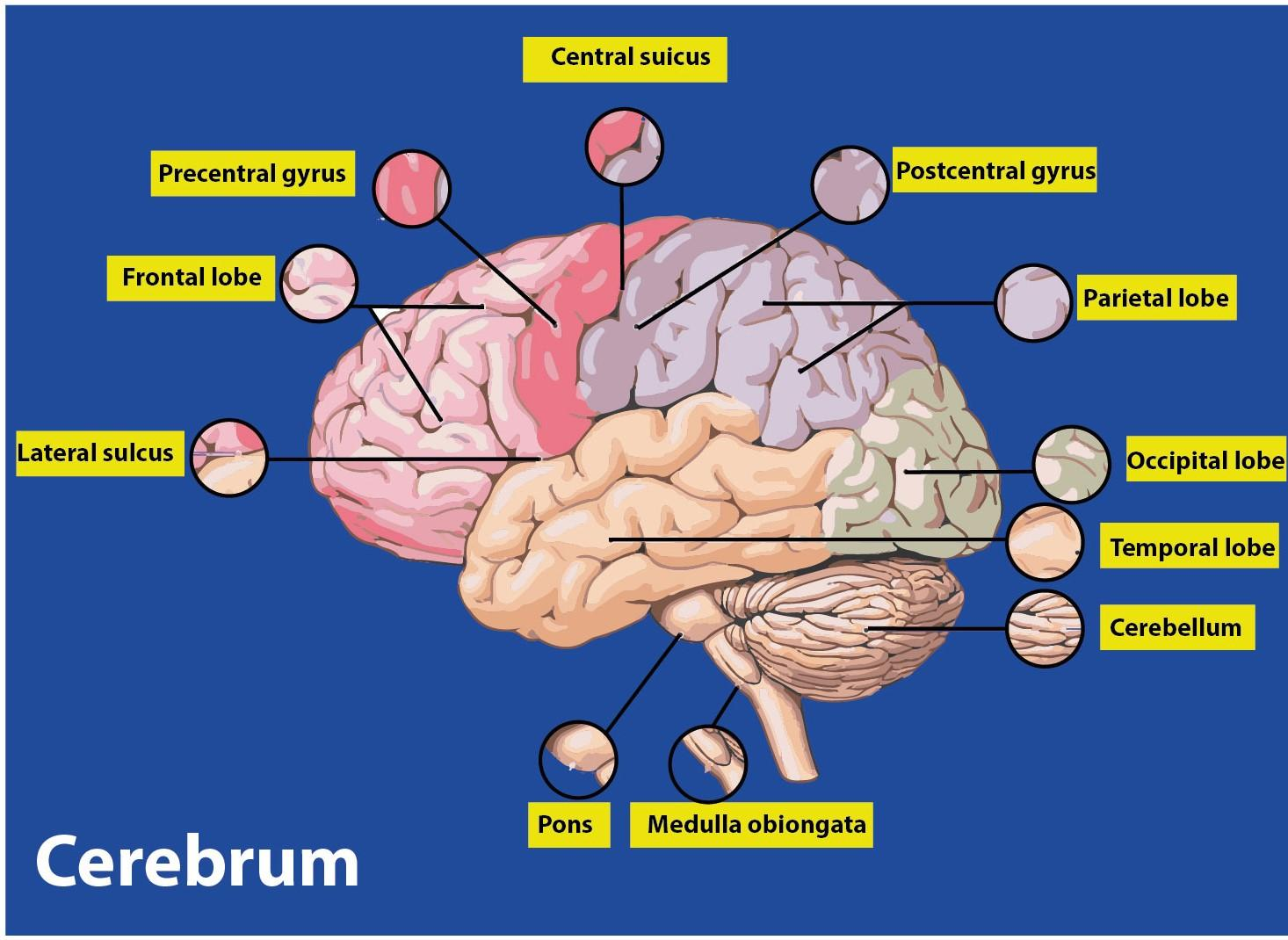Answer
405.6k+ views
Hint: The cerebrum is divided into two parts known as the left and right cerebral hemispheres. These hemispheres are further divided into different lobes on the basis of the functions they are associated with.
Complete Answer:
The cerebrum is the uppermost and largest structure of the forebrain. The cerebrum is divided into 2 hemispheres by a longitudinal fissure. But these two hemispheres are connected to each other by a bundle of nerve fibers known as the corpus callosum. Each of the hemispheres is divided into four lobes known as the frontal, parietal, temporal, and occipital lobe.
Additional information: Let us look at the lobes in detail.
Frontal lobe: It is located at the forward part of the brain and is responsible for reasoning, motor control, emotion, and language. It has Broca’s area which is essential for language production.
Parietal lobe: The parietal lobe is located just behind the frontal lobe and is involved in processing the information from the sense organs of the body.

Temporal lobe: It is located on either side of the head near the temples. It is responsible for hearing, memory, emotion. It has Wernicke’s area which is essential for understanding speech.
Occipital lobe: It is located at the back of the brain and contains the primary visual cortex required for interpreting the visual information coming from the optic nerve.
So, the correct option is ‘(c) Four’.
Note:
- The right hemisphere controls the movement of the left side of the body and the left hemisphere controls the right side of the body.
- Cerebral hemispheres should not be confused with the cerebellar hemispheres which make up the cerebellum.
- Cerebellum is a structure of the brain located in the hind region and is responsible for the coordination of voluntary movements, posture, and balance.
Complete Answer:
The cerebrum is the uppermost and largest structure of the forebrain. The cerebrum is divided into 2 hemispheres by a longitudinal fissure. But these two hemispheres are connected to each other by a bundle of nerve fibers known as the corpus callosum. Each of the hemispheres is divided into four lobes known as the frontal, parietal, temporal, and occipital lobe.
Additional information: Let us look at the lobes in detail.
Frontal lobe: It is located at the forward part of the brain and is responsible for reasoning, motor control, emotion, and language. It has Broca’s area which is essential for language production.
Parietal lobe: The parietal lobe is located just behind the frontal lobe and is involved in processing the information from the sense organs of the body.

Temporal lobe: It is located on either side of the head near the temples. It is responsible for hearing, memory, emotion. It has Wernicke’s area which is essential for understanding speech.
Occipital lobe: It is located at the back of the brain and contains the primary visual cortex required for interpreting the visual information coming from the optic nerve.
So, the correct option is ‘(c) Four’.
Note:
- The right hemisphere controls the movement of the left side of the body and the left hemisphere controls the right side of the body.
- Cerebral hemispheres should not be confused with the cerebellar hemispheres which make up the cerebellum.
- Cerebellum is a structure of the brain located in the hind region and is responsible for the coordination of voluntary movements, posture, and balance.
Recently Updated Pages
How many sigma and pi bonds are present in HCequiv class 11 chemistry CBSE

Why Are Noble Gases NonReactive class 11 chemistry CBSE

Let X and Y be the sets of all positive divisors of class 11 maths CBSE

Let x and y be 2 real numbers which satisfy the equations class 11 maths CBSE

Let x 4log 2sqrt 9k 1 + 7 and y dfrac132log 2sqrt5 class 11 maths CBSE

Let x22ax+b20 and x22bx+a20 be two equations Then the class 11 maths CBSE

Trending doubts
Fill the blanks with the suitable prepositions 1 The class 9 english CBSE

At which age domestication of animals started A Neolithic class 11 social science CBSE

Which are the Top 10 Largest Countries of the World?

Give 10 examples for herbs , shrubs , climbers , creepers

Difference between Prokaryotic cell and Eukaryotic class 11 biology CBSE

Difference Between Plant Cell and Animal Cell

Write a letter to the principal requesting him to grant class 10 english CBSE

Change the following sentences into negative and interrogative class 10 english CBSE

Fill in the blanks A 1 lakh ten thousand B 1 million class 9 maths CBSE



